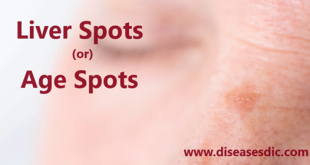Definition
Pityriasis means a type of fine skin scaling, and versicolor means changing colour. Pityriasis Versicolor is a common and harmless rash due to the overgrowth of yeasts that live on everyone’s skin. Pityriasis Versicolor is also called as Tinea versicolor;. These yeasts, called Malassezia, are not related to yeast in food or to those that cause thrush. It is also sometimes called tinea versicolor.
Pityriasis versicolor
Epidemiology of Pityriasis Versicolor
United States
Tinea versicolor occurs more frequently in areas with higher temperatures and higher relative humidities. The national prevalence of this condition is 2-8% of the population. The exact incidence in the United States is difficult to assess because many individuals who are affected may not seek medical attention.
International
Tinea versicolor occurs worldwide, with prevalences reported to be as high as 50% in the humid, hot environment of Western Samoa and as low as 1.1% in the colder temperatures of Sweden.
Race
Although the alteration in skin pigmentation is more apparent in darker-skinned individuals, the incidence of tinea versicolor appears to be the same in all races.
Sex
Several studies have addressed the frequency of tinea versicolor based on sex, and no dominance of either sex is apparent.
Age
In the United States, tinea versicolor is most common in persons aged 15-24 years, when the sebaceous glands are more active. The occurrence of tinea versicolor before puberty or after age 65 years is uncommon. In more tropical countries, age frequency varies; most cases involve people aged 10-19 years who live in warmer, humid countries, such as Liberia and India.
Risk factors
Various environmental and biological factors can put you at a higher risk for this condition, including
- A family history of tinea versicolor
- Excessive sweating
- A humid, warm climate
- A weak immune system
- Taking medications that weaken the immune system
- Some types of cancer
Causes of Pityriasis Versicolor
Yeast normally live on our skin. When the yeast overgrows, it causes the skin disease tinea versicolor. It is believed that the following can cause the yeast to overgrow:
- Hot, humid weather.
- Lots of sweating.
- Oily skin.
- A weakened immune system.
Symptoms
The first sign of tinea versicolor is often spots on the skin. These spots may:
Be lighter (or darker) than your surrounding skin. The color of the spots can be white, pink, salmon, red, tan, or brown.
- Appear anywhere on the body.
- Be dry and scaly.
- Cause the affected skin to itch.
- Become more noticeable when you have a tan (the yeast prevents the skin from tanning).
- Grow slowly.
- Grow together, forming patches of lighter (or darker) skin.
- Disappear when the temperature drops and return in the spring or summer when the air turns warm and humid.
Sometimes the spots are so faint that people do not realize they have tinea versicolor. If tinea versicolor causes light spots on the skin, it can be mistaken for vitiligo. Vitiligo is a skin disease that causes the skin to lose its natural color.
Complications of Pityriasis Versicolor
- Infection often leads to hypopigmentation of the skin, which may persist for months after successful treatment.
- Hypopigmentation will not clear until the skin becomes tanned again; however, if the rash is not scaly when scratched then the infection can be considered as cleared.
Diagnosis and test
Our doctor can diagnose tinea versicolor by what the rash looks like. Occasionally, the doctor may use ultraviolet light, which will make the affected areas appear a fluorescent yellow-green if they’re the result of tinea versicolor.
Diagnosed by using UV light
Your doctor may also take a skin sample by scraping some skin and scales from the affected area to look at under a microscope. With children, the doctor may lift off skin cells by first firmly attaching clear tape to the affected area and then removing it. The sample then can be stuck directly onto a slide to be looked at with a microscope.
Treatment and medications
If tinea versicolor is severe or doesn’t respond to over-the-counter antifungal medicine, you may need a prescription-strength medication. Some of these medications are topical preparations that you rub on your skin. Others are drugs that you swallow. Examples include:
- Ciclopirox (Loprox, Penlac) cream, gel or shampoo
- Fluconazole (Diflucan) tablets or oral solution
- Itraconazole (Onmel, Sporanox) tablets, capsules or oral solution
- Ketoconazole (Ketoconazole, Nizoral, others) cream, gel or shampoo
- Selenium sulfide (Selsun) 2.5 percent lotion or shampoo
Even after successful treatment, your skin color may remain uneven for several weeks, or even months. Also, the infection may return in hot, humid weather. In persistent cases, you may need to take a medication once or twice a month to prevent the infection from recurring.
Food diet that reduces Tinea versicolor
The Tinea versicolor diet should include the following food:
- Eat plenty of high immune-boosting vitamins, minerals, and antioxidants, which include fruits and vegetables which are great sources of vitamins A, C, and E—all which are antioxidant powerhouses.
- Probiotics – which has beneficial bacteria, and is great for healthy digestive and immune function.
- Vitamin D which supports a healthy immune system and healthy skin, and magnesium for healthy mood and emotions which in turn affects the health of the skin.
- People suffering from tinea versicolor should sugar, baked goods, vinegar malt, peanuts, and alcohol.
How long will it take for your skin to return to normal?
If you’re diagnosed with tinea versicolor, treatment will improve your long-term outlook. However, even after eliminating the infection, your skin may remain discolored for several weeks or months following treatment. Your infection may also return when the weather becomes warmer and more humid. If your condition returns, your doctor may prescribe medication once or twice per month to prevent symptoms.
Prevention of Pityriasis Versicolor
- Avoid excessive heat
- Avoid tanning or excessive sun exposure
- Avoid excessive sweating
- Avoid using oily skin products.
- Put on sunscreen every day.
- Do not wear tight clothing.
- Always shower immediately following exercise or a hard day’s work under the sun. This will wash away the oils produced through sweat, oils that the fungus feeds upon.
 Diseases Treatments Dictionary This is complete solution to read all diseases treatments Which covers Prevention, Causes, Symptoms, Medical Terms, Drugs, Prescription, Natural Remedies with cures and Treatments. Most of the common diseases were listed in names, split with categories.
Diseases Treatments Dictionary This is complete solution to read all diseases treatments Which covers Prevention, Causes, Symptoms, Medical Terms, Drugs, Prescription, Natural Remedies with cures and Treatments. Most of the common diseases were listed in names, split with categories.








hello… i have problems of these types of skin disease……it also called white spots I have this type of disease…. so plzz give me some idea how to remove this type of disease from my body and also write what types of medicine must be eat!! Thank you
First consult with skin specialist to know what sort of skin disease which you have.
There are skin diseases that leave white spots from scaring.
hello sir I have a skin problems if a use of all drug but no compleatly my cause
consult a doctor. based on your severity of your disease, doctor will prescribe the suitable dosage of drug.
pls I want to know the rashes that is seen around the head but looks jux like the one on the skin
Please consult a dermatologist as soon as possible.
hello,I have vitiligo so how can I get the treatment please.
very soon we will update about vitiligo. please keep reading our app.
can I get food diet for tis problem…..
Please check the post again for the food diet for this disease.
food diet that can cure this when taken in
Foods to be taken:
-Include raw vegetables and fruits, whole grains like broccoli, green beans, green leafy vegetables
-Raw pumpkin seeds, sweet potatoes, onions, citrus fruits are all good for treating tinea versicolor
-Whole grain variants of rice, pasta, oat meal will be good substitutes
-Take two raw cloves of garlic daily as garlic has very good anti-fungal properties
-Yoghurt should be taken daily as it helps to maintain a good balance between the healthy bacteria on the body and fungi.
-Use olive oil and vegetable oil
How can I send you the picture of toned hands that turned black due to cream reaction and I want to know what treatment to apply. Waiting to read from you shortly
It would be better to consult a doctor rather than sending picture to us.